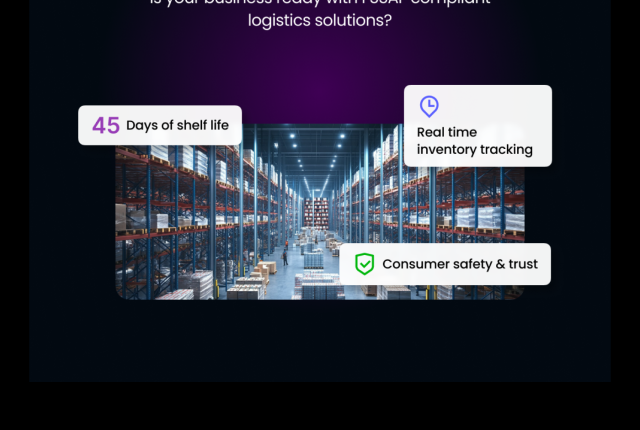
Sustainability in Business and Logistics: The Future is Now
For manufacturers, traders, and service providers, sustainability is not just a mandate, it has become a way of living and doing business.
In August 2021, the Intergovernmental Panel on Climate Change (IPCC), a UN body released a climate assessment report that had an unusual conclusion. The report presented the reader with five different climate-change futures, each based on the trajectory that the world takes, by the year 2100. In the best-case scenario, governments act with the needed urgency to reduce fossil fuel use and keep global warming below 1.5°C. The worst-case scenarios had the world act as it has been acting thus far – in a retrospective manner. This scenario was apocalyptic, portending numerous extreme weather events, larger geographical areas submerged under water, and widespread poverty and distress.
Companies and corporations have been aware of the deteriorating climate conditions for a long, but it is only in the last decade that they have amped up efforts to address, and possibly stem the problem. In 2015, the Paris climate agreement – also known as the COP 21 (Conference of the Parties) agreement – reached between 193 countries and the European Union was a historic milestone for humanity. The signatories set ambitious but achievable aims such as preventing the rise of global temperatures 1.5°C above preindustrial levels and producing half of the world’s electricity from renewables by the year 2030. At the COP 27 held in Egypt this year, all the parties reaffirmed their resolve to meet the targets and work more expeditiously toward the cause.
Greenhouse Gas (GHG) emissions are among the biggest contributors to the problem of climate change. Globally, the biggest sources of GHG emissions are the electricity, industry, and transport sectors which together account for over 73 percent of the share.
The transportation sector, on its part, contributes about 16 percent, within which road transport is the biggest source of GHG emissions at about 12%, followed by aviation (1.9%) and shipping (1.7%). Clearly, the logistics and the supply chain sector, which relies in a big way on energy as well as road, sea, and air transport for its various operations – from raw material procurement to inbound and outbound goods movement, and last-mile logistics to warehousing operations – can and must do its part and more to help the world attain reach sustainability goals.
Achieving Sustainability in Logistics
The D2C business model is a relatively new entrant into the marketplace. The rise of the internet and its wider availability at the turn of the millennium brought suppliers from across the world to the web in search of local and international customers who existed outside the former’s own trading ecosystems. But the markets took time to warm up to the trend. The success of B2B marketplaces like Alibaba encouraged manufacturers worldwide in bringing their marketing and sales activities online.
The pandemic years caused a big shift worldwide in consumer behaviour toward online shopping. A UNCTAD survey “Covid-19 and E-commerce” conducted in 2020, covering over 3,700 consumers across nine economies including Brazil, China, South Africa, Switzerland and Turkey showed that consumer preferences across major product categories including electronics, pharmaceuticals, education, household products and personal care moved toward online sales channels.
Go D2C
A bevy of practices, existing and emerging, together make the growing arsenal of strategies that place logistics organizations and stakeholders on the road to sustainability.
The one that has gained prominence with leading corporations and investment firms is the ESG (Environmental, Social, Governance) framework.
Gartner defines ESG as a collection of corporate performance-evaluation criteria that provide a measure of “a company’s governance mechanisms and its ability to effectively manage its environmental and social impacts.”
The closest and the best example of ESG in practice is Apollo Supply Chain’s ESG policy. The company considers ESG as a guiding beacon for its business goals. It defines the three pillars of the policy as comprising a range of the following holistic values.
Environmental
The Environmental pillar of ASC’s ESG policy comprises the following values:
- Decarbonization of supply chains
- Reduction of Greenhouse Gas (GHG) Emissions
- Sustainable Transportation Solutions
- Enablement of EV (Electric Vehicles) Solutions
- Transition Toward Renewable Energy Sources
- Sustainable Packaging Solutions
Social
The Social pillar of ASC’s ESG policy comprises the following aims:
- Diversity & Inclusion
- A Nurturing Work Environment
- Positive and Healthy Employee Relations
- Empowering Community Relations
- A Strong Respect for Human Rights
Governance
The Governance pillar of ASC’s ESG policy comprises the following aims:
- Sound Risk Management Policies & Execution Strategy
- Productive Executive Compensation
- Industry-Best Reporting and Disclosure Practices
- A Growth and Stability-Oriented Board Structure
- Strong Cybersecurity Policies and Practices
Another sustainability framework that is followed by many organizations is called Triple Bottom Line growth. More than two decades ago, British author John Elkington introduced the term Triple Bottom Line (TBL) to encourage companies to work toward the growth of three distinct bottom lines focused on three Ps: profit, people, and the planet. For a company’s logistics operations, a TBL approach would mean the inculcation of agility, nurturing talent, and environmental sustainability in all areas of the supply chain.
Learnings from Logistics Leaders
Sustainability concepts such as ESG and TBL apply not just to corporations or countries at the level of strategy. Investors and observers consider their applications to logistics and supply chain an important and reliable marker of a company’s growth. All Fortune 500 companies have made sustainability inextricable to their business goals. Starbucks is a good example. The world’s largest coffeehouse chain has made sustainability a priority. It is a verified 99-percent ethically sourced company. It has also worked toward becoming a resource-positive retailer, one which restores more carbon than it produces and provides more clean water than it uses. ; and an participant of the C.A.F.E. (Coffee and Farmer Equity Practices) program
Similarly, all leading logistics service providers including Kuehne + Nagel, DHL Supply Chain, DSV, and Apollo Supply Chain continue to take proactive steps to decarbonize their logistics footprint across their transportation networks and warehouses.
More Than a Mandate
Today, sustainability is not just a government-mandated initiative. It’s a matter of survival for the humanity. Supply chain organization are working actively to fulfil their sustainability goals, but they will need to do more. Producers, suppliers, and logistics service providers alike will need to build transparency into their supply chain footprints to reduce their carbon footprint, following the highest social and governance norms.
Related posts
FSSAI reinforces Shelf-Life Guidelines: Key Considerations for E-Commerce FBOs
Introduction The Food Safety and Standards Authority of India (FSSAI) has reinfo
Omnichannel Logistics: A Different Beast
An effective omnichannel logistics strategy is an essential implement to have in
Advantage D2C: Reach Your Consumer
A Direct-To-Consumer sales strategy, backed by sound logistics, can prove to be



Leave a Reply